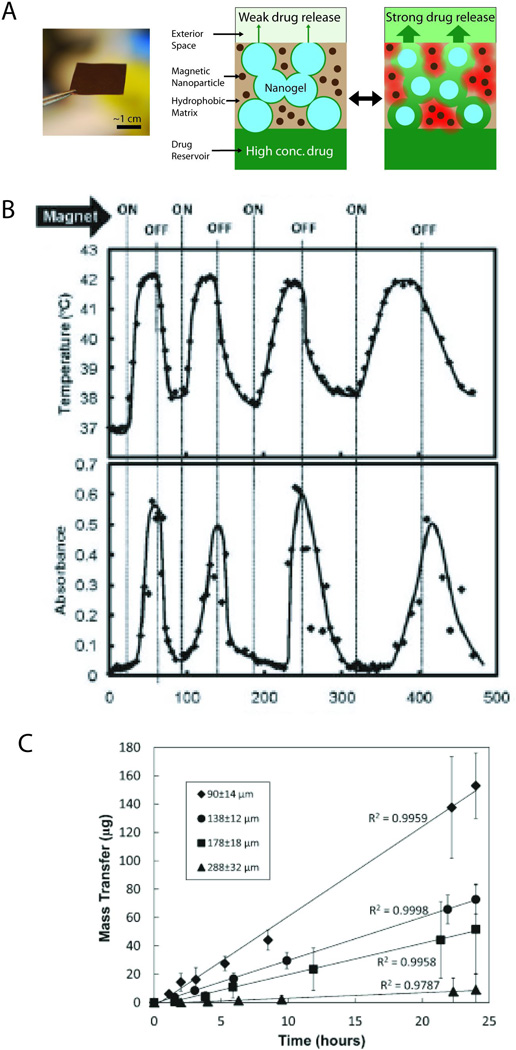Fig. 1.

(A) (Left) Photograph of membrane containing ferromagnetic nanoparticles and temperature-sensitive nanogels, distributed throughout an ethyclellulose matrix. (Right) Schematic of a cross section of the membrane, showing nanogel particles (blue), iron oxide nanoparticles (dark brown), and ethylcellulose matrix (light brown). Upon application of an oscillating magnetic field, the magnetic nanoparticles release heat (red) and reversibly shrink the nanogel, enabling release of a drug (green) from a reservoir contained by the membrane. (B) Temperature profile and differential flux of sodium fluorescein out of a membrane-capped capsule as a function of time over four successive on/off cycles of the external magnetic field. (C) Mass transfer of sodium fluorescein as a function of “on” triggering time for membranes with different thicknesses. Adapted with permission from refs. 33 and 34. Copyright 2009 and 2011 American Chemical Society.
